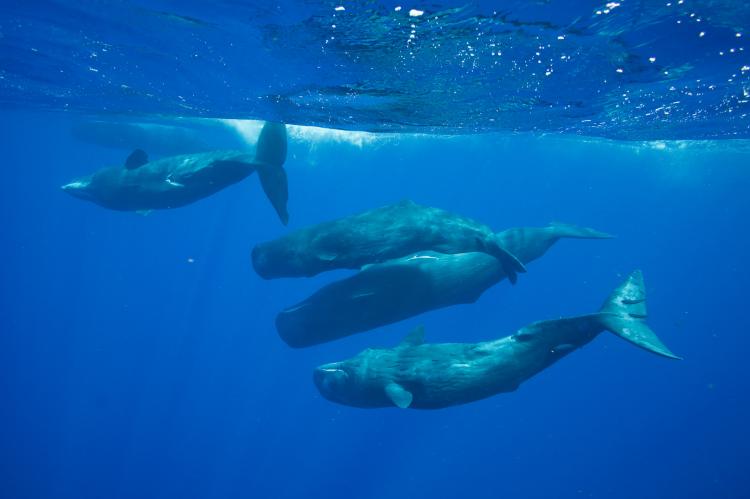2016 New Zealand quake disrupted sperm whales' foraging behaviour
A study shows how the massive earthquake in New Zealand in 2016 caused changes in the sperm whales' behaviour, and suggests reasons for it.
In November 2016, a 7.8 magnitude earthquake in New Zealand triggered underwater mudslides in the underwater canyon off the coastline. This led to high-velocity currents to flush 850 tonnes of sediment from the canyon into the ocean.
This "canyon flushing" caused what was once a diverse ecosystem of invertebrates along the Kaikoura underwater canyon to become as "quiet as a desert."
A paper in the Deep Sea Research Part I journal describes how sperm whales were subsequently affected by the quake and how they changed their foraging habits as a result.
This study is the first to look into how a large earthquake affects marine mammals (Most of such studies focused on land animals after the event).
The research team happened to be studying sperm whales in the Kaikoura area when the earthquake occurred. They saw it as a unique opportunity to study how the sperm whales were affected by it.
"We just happened to be at the right place at the right time," said co-author Will Rayment, a senior lecturer at the University of Otago, in a National Geographic article.
The research, led by the University of Otago, focussed on the behaviour of sperm whales from January 2014 to January 2018. The team found that after the quake, the whales spent 25 percent more time at the surface, which was possibly due to them having to spend more effort searching for prey by either diving deeper or for a longer duration.
Before the quake, the whales mostly foraged in the upper part of the canyon. After the quake, they did their hunting mostly in the deeper parts of the canyon.
There were two possible reasons for this: First, the canyon flushing had wiped out nearly 40,000 tonnes of biomass from the canyon's seabed. Animals that depend on these invertebrates for food—like the deep-water fish and squid (which sperm whales feed on)—would have had to seek out other sources of food, in other locations. This would subsequently cause the sperm whales to spend more time hunting, or at deeper locations.
Secondly, because of the sediment deposition and erosion, the sperm whales would have needed additional efforts to refamiliarise themselves with the new landscape.
Interestingly, the sperm whales' behaviour returned to normal about a year after the earthquake, in the summer of 2017-2018. This was perhaps because the invertebrate community had recovered or the sediment had settled.
"It gives you an idea of how resilient these deep-sea communities are," said Rayment.


